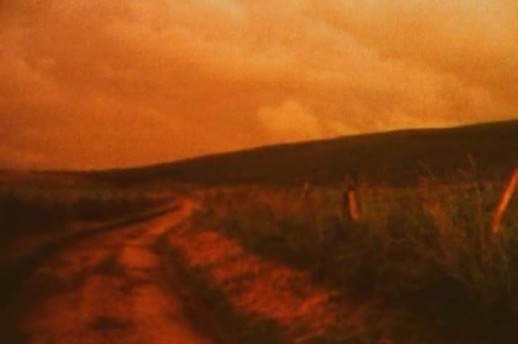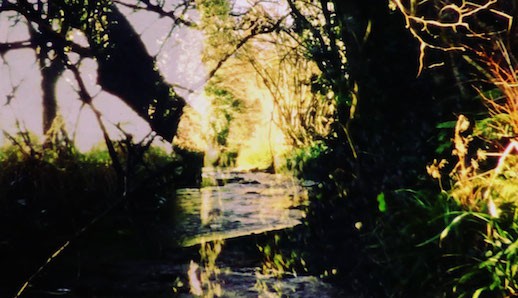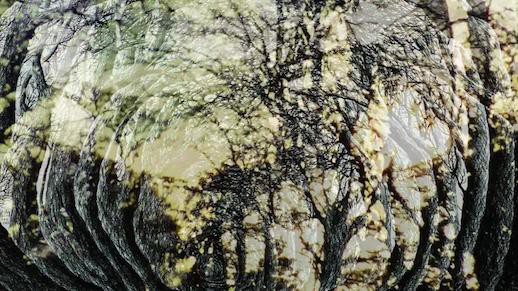Further exploration of Dorset’s sunken pathways by Robert Macfarlane and film-maker Adam Scovell:
In 1971 Derek Jarman made a ten-minute silent short called Journey To Avebury, documenting a summer walk through the chalklands of southern England. The film seems, at first, more pastoral home-movie than avant-garde: sheep graze, footpaths dwindle into the long distance. Gradually, though, an eeriness builds. Where are the people? Who is holding the camera? The landscape feels emptied, rather than empty. Clouds glower and loom. A psychic weather communicates itself to the viewer: close, clammy, threatening. Vital to this atmosphere is the Super-8 film on which Jarman shot the work. Super-8 flickers and blebs. It bleeds. Colours lustre and thicken within it. Its scratchy textures suggest another set of frames underneath, showing through here and there; other stories trying to pry their ways out.
Early last year, I began a collaboration with a talented young film-maker called Adam Scovell. Inspired in part by Jarman, and by the possibilities of Super-8 as a medium that was also a form, we set out to make a short film about the sunken lanes in South Dorset that are known as holloways. I had become fascinated by these strange folds of land: by the manner in which history seemed to repeat – re-pleat – itself within and around them, across centuries, and by the patterns of echo and loop that I perceived the holloways as somehow generating. Super-8 – Adam’s preferred stock – seemed the perfect film on which to shoot this subject, given its palimpsestic surface and its shivery rhythms. I wrote a text to be spoken as voiceover, which I tried to ingrain with doublings and reversals (of image, word, sound). We wanted to make a film that cast a brief strong spell.
Adam spent two days filming in Dorset. He took his 1970s Canon camera, and three 3 ½-minute rolls of Kodak. That was all. No room for error on a nine-minute film. None of the digital luxuries of firing off test-bursts, or letting the camera run. I admired his parsimony and control; wished I could acquire some as a writer. He hit winter days of white light, rain, sun flares and water flooding the bellies of the holloways like mercury.
Then Adam edited. On and off for seven months – getting on for a month per minute. I admired his patience and commitment; wished I could acquire some as a writer. He layered in wildtrack of the holloways, recorded by the artist and composer James Bulley. He underlaid the Super-8 here and there with Stanley Donwood’s artwork: spectral pencil underworld to the celluloid upperworld.
At last there was a near-final edit. At that point we approached the musician and poet Richard Skelton to see if he would score the film. He agreed, and wrote original music for it. So it came together. Hommage to Jarman and the holloways. A layered film about a layered place; a film of folds about a folded place.
The Super-8 had a last surprise for us, though. Embedded in Adam’s footage were several dark forms, human-ish in outline, unidentifiable but unmistakable, visible within the leaves or the shadows. ‘What the hell is that thing at 2.02?’, I e-mailed Adam. ‘I’m glad you can see it too,’ he replied. ‘My dad thinks I’ve gone mad…’.


